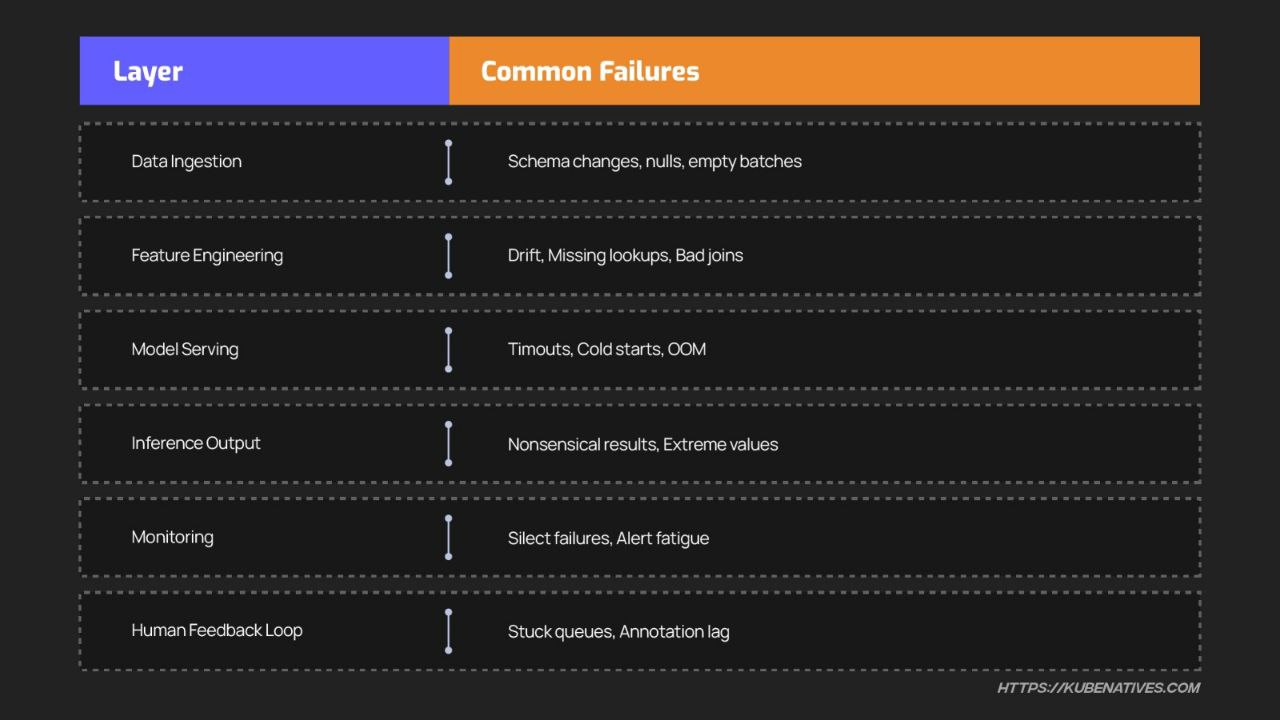What We Can Learn from Netflix Chaos Engineering for Model Robustness
LLMs don’t just fail silently — they fail expensively. Here's how chaos engineering principles can prevent your model from becoming a black box in production.
Netflix streams billions of hours of video every month.
To keep things running, their engineers don’t just monitor failures — they create them on purpose.
They simulate outages, kill services, overload systems, and unplug entire regions — all to answer one question:
"Will the system still behave predictably?"
Now imagine asking that same question about your ML model in production.
What if your embedding store goes down?
What if the input data drifts outside expected distributions?
What if latency spikes cause your batcher to drop half the requests?
Most ML systems aren’t designed for chaos.
They’re designed to work just fine... under ideal lab conditions.
The MLOps Problem: Accuracy ≠ Robustness
You trained a model with 97% accuracy. Great.
But:
Did you test it under noisy data?
Did you check how it reacts when upstream APIs fail?
Did you simulate missing features or outdated embeddings?
Did you inspect if it silently fails or throws alerts?
In short:
Have you chaos-tested your ML system like a microservice?
🎬 Enter Chaos Engineering
Netflix’s Chaos Engineering playbook is built on five core ideas:
Build a hypothesis around steady-state behavior
Vary real-world events (e.g., latency, dependency failure)
Run experiments in production
Automate the experiments continuously
Minimize blast radius
Now let’s port these to an ML environment.
🧪 Chaos Experiments for MLOps
Here are 6 ML-specific chaos experiments you should be running:
These aren’t tests for the model accuracy.
They’re tests for model behavior under chaos.
What Breaks in ML Systems (And Nobody Talks About)
You might have alerts on CPU and memory.
But do you have alerts on "model confidence < 0.3 for 90% of requests"?
Tools & Patterns to Simulate ML Chaos
ml-chaos-monkey(build one)
A simple tool that randomly:drops feature inputs
swaps model versions
delays external calls
adds noise to batches
Feature Store Failover
Try toggling between Redis and S3.
Simulate loss of low-latency retrieval.Confidence-Based Alarms
Trigger alerts when confidence scores drop across time.Canary Inference Pods
Deploy shadow models and compare outputs silently.Drift Injection Pipeline
Feed crafted "out-of-domain" samples into live inference and monitor impact.
Contrarian Insight
Model bugs don’t cause the biggest ML incidents. They’re caused by missing observability and assumptions about stability.
Production LLMs and ML systems are distributed, stateful, and often fragile.
Just like microservices, their true failure modes only become apparent under pressure.
If you haven’t seen your model break yet — it’s not because it’s robust.
It’s because you haven’t tested it hard enough.
Your ML Chaos Checklist
✅ Simulate missing or delayed features
✅ Inject synthetic noise and drift
✅ Test recovery from cold-starts and OOM kills
✅ Build assertions on output distributions
✅ Alert on behavior, not just infra
✅ Validate feedback loop speed + reliability
Real-World Impact
Engineers who ignore these steps face:
Undetected silent degradation
Loss of user trust in predictions
Massive GPU bills from repeated retries
Business teams asking: “Why didn’t we catch this sooner?”
Chaos engineering for ML isn’t just smart —
It’s the new bar for reliability in intelligent systems.
Final Thought
Netflix made chaos part of their engineering DNA.
ML teams need to do the same.
Accuracy won’t save you from an outage.
Robustness will.
Build models that can fail gracefully and recover predictably.




